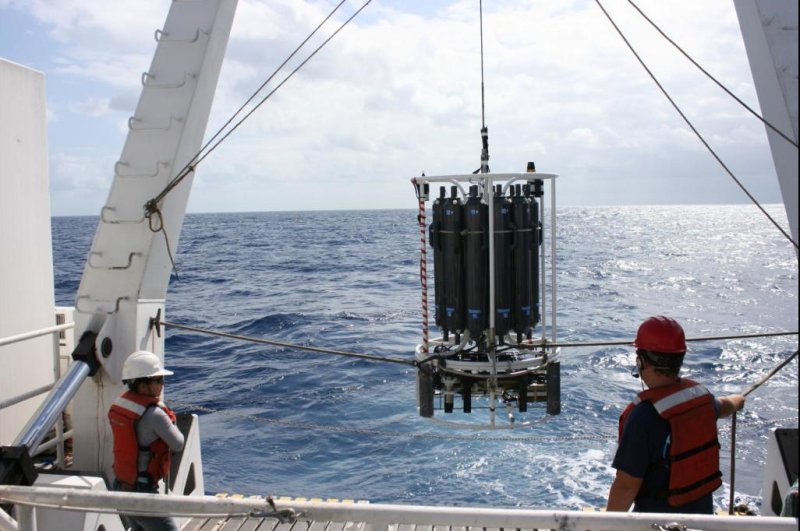Scientists deploy a water sampler in the North Pacific Ocean near the site where two new phytoplankton groups were first detected. Photo by Adam Monier/University of Exeter
TORONTO, Jan. 9 (UPI) -- Two newly identified groups of phytoplankton appear to thrive in warm water. Though they are rare and different from any known species, scientists suggest the groups could become more common as ocean temperatures rise.
"These new phytoplankton appear to thrive in the world's most desert-like waters where most other eukaryotic species decrease," Alexandra Z. Worden, a senior fellow at the Canadian Institute for Advanced Research, said in a news release.
The new types of phytoplankton were found concentrated in warm, low-nutrient surface water. In the winter, mixing between different layers of the ocean column more frequently brings cool, nutrient-rich water to the ocean surface, generating phytoplankton blooms. During the summer, this biodiversity dissipates as regions of warm, low-nutrient water grow.
Most phytoplankton species don't do well in these low-nutrient zones. This is where the two new phytoplankton groups have apparently carved out a niche.
"As microbes in our oceans are forced to adapt to climate change, these are the types of organisms we really need to understand," Worden said.
Scientists first noticed the groups as an anomaly among microbial DNA sequenced in water samples. Researchers developed techniques to filter the unique sequences from the genetic noise of ocean samples and compared the sequences to other lineages. Ultimately, scientists realized they had found two types of phytoplankton unlike any other known species or class.
"To understand future oceans one-off sampling won't work," Worden explained. "If we had taken one snapshot of the ocean in spring we would have thought these phytoplankton didn't matter, but because we kept going back we realized they are important -- it takes year-round sampling of the seasons to see that."
Worden and her colleagues described the new groups of phytoplankton in the journal Current Biology.















